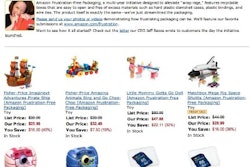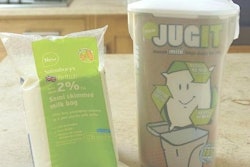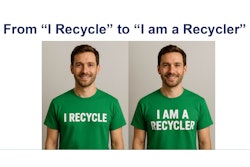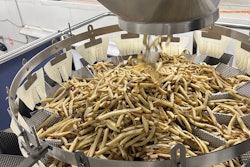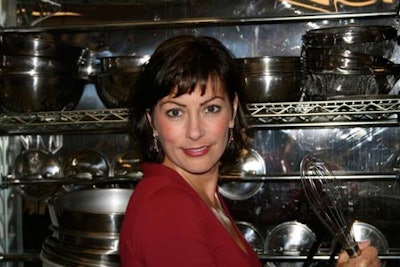
Barbara Stuckey
“If it doesn’t hurt, it’s probably not innovation.” That’s according to Barbara Stuckey, executive vice president of Mattson (www.foodcom.com), Foster City, CA, the country’s largest independent developer of new products for the food and beverage industry.
Her “no-pain, no-gain” motto was one of seven “guiding principles of innovation” she shared with a packed audience at the Private Label Manufacturer Assn.’s (www.plma.com) 2008 Private Label Trade Show in mid-November. Her presentation, “How to Create New and Innovative Products,” also outlined eight steps in the innovation process, using examples from Mattson’s experience in product and packaging development. Her recommendations follow.
Guiding Principles of Innovation
1. If it doesn’t hurt, it’s probably not innovation. True innovation typically takes a year or more and can be very expensive. “You must invest in innovation,” Stuckey said. “The harder it is to innovate, the higher the barrier to entry for your competitors.”
2. Don’t rely solely on syndicated or secondary data. If you have access to special industry surveys and reports, so do your competitors. You must conduct primary research with your customers.
3. Hire brand managers or learn to think like them. Invest in people who specialize in creating and managing brands.
4. Differentiate your product/packaging. “You have to establish and maintain differentiation,” Stuckey notes. “It’s not about being better, it’s about being different.” As an example, Stuckey discussed Mattson customer Bolthouse Farms, traditionally a marketer of premium juice beverages. Bolthouse Farms engaged Mattson to help them develop a line of salad dressings. Rather than trying to make a better dressing than those already on the market, Mattson suggested a new twist: a line of first-of-its-kind yogurt dressings in premium, custom packaging.
5. Know the neighborhood. You have to thoroughly understand what products and packaging are available—their strengths and weaknesses—in a category before trying to innovate.
6. Know your customer. Understand your customer’s needs and expectations, and how they use a product or package in their daily lives.
7. Brands mean more than price. Define your product beyond cost, through value, product attributes, etc.
The Innovation Process
1. Conduct primary consumer research. This will help you to identify big opportunities. Then drill-down to specific ideas using consumer feedback.
2. Develop creative around these opportunities. Stuckey recommends conducting creative exercises in-house to brainstorm new ideas. At Mattson, CPGs get their hands dirty with Mattson developers in a lab equipped with a variety of food ingredients and packaging materials to spur creativity. Stuckey also recommends that during the creative process, you should not allow you existing assets (equipment, processes) to limit your innovation. “Guide creative, but don’t handcuff it,” she advises.
3. Test concepts with consumers. Test packaging, positionings, varieties. Also ask customers to benchmark product ideas against products currently on the market.
4. Develop protocepts. Move the ideas into the lab and develop commercializable products.
5. Test protocepts with consumers. Ship products to consumers’ homes and, when possible, provide them with equipment such as digital cameras and digital voice-mail access that allows for immediate feedback. “You can’t make new product decisions sitting in a meeting room,” she says.
6. Begin commercialization. “This is the hardest part of the process,” Stuckey says, “especially if you are using a new technology or a new process.” The challenge is to find manufacturers and co-packers willing to create short runs of products before a full production run is launched.
7. Retest products with consumers before launch. “Make sure the product you are introducing is the same product that consumers said they wanted at the beginning of the process,” Stuckey says.
8. Refine, improve, optimize. Once the product is on the shelf, Stuckey says, “it needs to be a living thing; it needs to morph and grow.” One example she shared was of a product launched in 2001 by Joint Juice, Inc., San Francisco, with Mattson’s help. It was the first glucosamine drink on the market. Originally introduced as a full-size, premium-packaged beverage aimed at a younger generation, the product did not do as well as expected in this format. The product then evolved into a more convenient, canned drink for older consumers. A recent addition to the line includes a fitness water with glucosamine and electrolytes for active consumers concerned with joint health. Both the canned Joint Juice product and Joint Juice Fitness have been a big success for the company.
Her “no-pain, no-gain” motto was one of seven “guiding principles of innovation” she shared with a packed audience at the Private Label Manufacturer Assn.’s (www.plma.com) 2008 Private Label Trade Show in mid-November. Her presentation, “How to Create New and Innovative Products,” also outlined eight steps in the innovation process, using examples from Mattson’s experience in product and packaging development. Her recommendations follow.
Guiding Principles of Innovation
1. If it doesn’t hurt, it’s probably not innovation. True innovation typically takes a year or more and can be very expensive. “You must invest in innovation,” Stuckey said. “The harder it is to innovate, the higher the barrier to entry for your competitors.”
2. Don’t rely solely on syndicated or secondary data. If you have access to special industry surveys and reports, so do your competitors. You must conduct primary research with your customers.
3. Hire brand managers or learn to think like them. Invest in people who specialize in creating and managing brands.
4. Differentiate your product/packaging. “You have to establish and maintain differentiation,” Stuckey notes. “It’s not about being better, it’s about being different.” As an example, Stuckey discussed Mattson customer Bolthouse Farms, traditionally a marketer of premium juice beverages. Bolthouse Farms engaged Mattson to help them develop a line of salad dressings. Rather than trying to make a better dressing than those already on the market, Mattson suggested a new twist: a line of first-of-its-kind yogurt dressings in premium, custom packaging.
5. Know the neighborhood. You have to thoroughly understand what products and packaging are available—their strengths and weaknesses—in a category before trying to innovate.
6. Know your customer. Understand your customer’s needs and expectations, and how they use a product or package in their daily lives.
7. Brands mean more than price. Define your product beyond cost, through value, product attributes, etc.
The Innovation Process
1. Conduct primary consumer research. This will help you to identify big opportunities. Then drill-down to specific ideas using consumer feedback.
2. Develop creative around these opportunities. Stuckey recommends conducting creative exercises in-house to brainstorm new ideas. At Mattson, CPGs get their hands dirty with Mattson developers in a lab equipped with a variety of food ingredients and packaging materials to spur creativity. Stuckey also recommends that during the creative process, you should not allow you existing assets (equipment, processes) to limit your innovation. “Guide creative, but don’t handcuff it,” she advises.
3. Test concepts with consumers. Test packaging, positionings, varieties. Also ask customers to benchmark product ideas against products currently on the market.
4. Develop protocepts. Move the ideas into the lab and develop commercializable products.
5. Test protocepts with consumers. Ship products to consumers’ homes and, when possible, provide them with equipment such as digital cameras and digital voice-mail access that allows for immediate feedback. “You can’t make new product decisions sitting in a meeting room,” she says.
6. Begin commercialization. “This is the hardest part of the process,” Stuckey says, “especially if you are using a new technology or a new process.” The challenge is to find manufacturers and co-packers willing to create short runs of products before a full production run is launched.
7. Retest products with consumers before launch. “Make sure the product you are introducing is the same product that consumers said they wanted at the beginning of the process,” Stuckey says.
8. Refine, improve, optimize. Once the product is on the shelf, Stuckey says, “it needs to be a living thing; it needs to morph and grow.” One example she shared was of a product launched in 2001 by Joint Juice, Inc., San Francisco, with Mattson’s help. It was the first glucosamine drink on the market. Originally introduced as a full-size, premium-packaged beverage aimed at a younger generation, the product did not do as well as expected in this format. The product then evolved into a more convenient, canned drink for older consumers. A recent addition to the line includes a fitness water with glucosamine and electrolytes for active consumers concerned with joint health. Both the canned Joint Juice product and Joint Juice Fitness have been a big success for the company.



